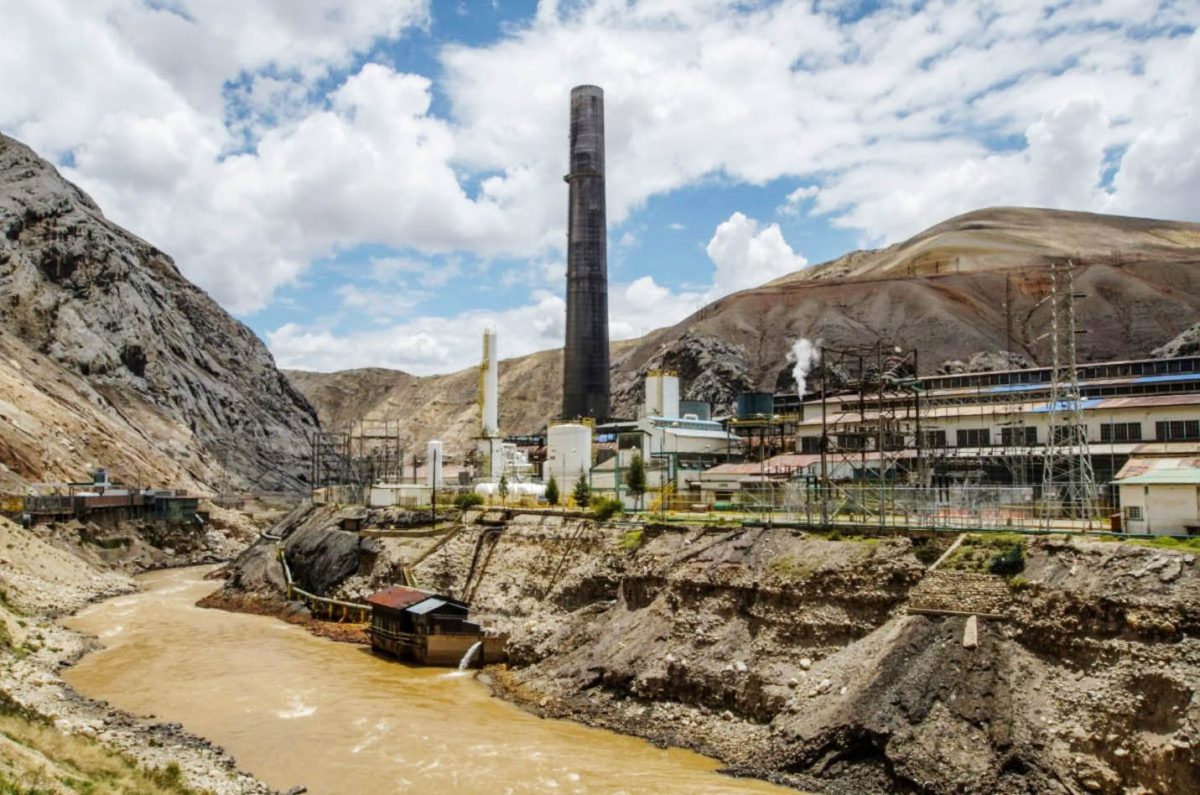BOGOTA, (Thomson Reuters Foundation) – A court’s ruling that residents of a polluted Peruvian mining town have the right to a healthy environment could be a milestone for similar cases in Latin America, though the blighted community still faces hurdles in its fight for justice.
The Inter-American Court of Human Rights (IACHR) ruled in March that Peru had failed to regulate a 100-year-old smelter complex in the Andean town of La Oroya and stem pollution that contaminated the air, water and soil for decades, harming local people’s health.
“This case is the first time that the court is … really recognizing a connection between the health of an environment and the health of human communities,” said Jacob Kopas, senior attorney at the Earthjustice environmental group, who has been working on the case for over a decade.
The ruling, which is binding and cannot be appealed, paves the way for other pollution-hit communities in Peru and across Latin America to seek justice, and could also influence future climate change litigation in the region, Kopas added.
“Now with this precedent, we can point to it and say yes you have access to justice – this has been recognized as a human rights violation,” said Kopas.
The ruling by the Americas top human rights court ordered Peru to pay damages to residents affected by toxic pollution stating that victims should receive at least $30,000 each in damages, with the most vulnerable receiving $50,000.
It also ordered the government to assess the current state of contamination in La Oroya, set up air pollution monitoring and alert systems, provide free medical care to the victims and publicly acknowledge its wrongdoing.
The complex, which is currently operated by Metalurgica Business Peru SAC, a firm that counts former workers among its shareholders, will be able to continue operating.
Liliana Avila, a lawyer with the non-profit Interamerican Association for Environmental Defense (AIDA) who represented the La Oroya plaintiffs before the Costa Rica-based court, said the ruling was a “milestone that is a gigantic step in advancing environmental justice in Latin America.”
But Yolanda Zurita, one of 80 petitioners in the case, said her fight would now switch to ensuring victims get the compensation ordered by the court.
“The next process is to demand that the state complies with the ruling. It will be difficult but not impossible,” the 65-year-old environmental campaigner told the Thomson Reuters Foundation.
“Our fight, our resistance is for the well-being of future generations so they can have a better quality of life,” she said.
Peru’s Environment Minister Juan Carlos Castro told local media after the ruling that government attempts over the years to stop pollution in La Oroya had been difficult because the smelter was a key source of jobs.
“We’re a country that adheres to the Inter-American Court and we are going to respect what it says, as long as the agency (Justice Ministry) of our country determines it in this way,” Castro added.
MILESTONE RULING
For a century, La Oroya’s 30,000 inhabitants have shared their town with the smelter complex that began operating in 1922 and continues to churn out metals including gold, silver, lead, zinc and copper.
The case included evidence given by La Oroya residents of skin, heart and stomach problems, chronic headaches, respiratory illnesses, along with lead poisoning they blame on the gray smog caused by the smelter that sits in the middle of the town.
The court said it had corroborated that exposure to lead, cadmium, arsenic and sulfur dioxide posed a significant risk to local residents, who did not receive adequate medical attention from the government when they became ill.
“It is sufficient to establish that the State allowed the existence of levels of contamination that put people’s health at significant risk,” the ruling said.
Nearly all the children in the case had high lead levels in their blood, many times higher than World Health Organization guidelines, according to Earthjustice.
‘WAKE-UP CALL’
The court ruling could inspire more communities in Peru and beyond to bring pollution cases against governments.
Zurita said she had already received calls from other community leaders across Peru, who are suffering from similar types of industrial and water pollution caused by mining, asking for advice about how to develop a legal case and bring it to court.
“The seeds have been sown for others to resist,” she said.
While the La Oroya case was the IACHR’s first such ruling, it is among an increasing number of environmental lawsuits brought by citizens against governments in Latin America that hinge on human rights law.
The region has been at the “vanguard” of the concept of a healthy environment, with some countries recognizing the right in their constitutions, said Kopas.
The court ruling will reverberate in court decisions and influence constitutional law linked to environmental issues, he added.
“Pretty much every case in Latin America we are going to be working on from here on now, we are going to cite this case,” he said. “When the (IACHR) orders something, governments basically know that this is not going to go away.”
“We are hoping that this will be a wake-up call for a lot of countries that you can’t ignore the human health impacts of pollution going forward.”





